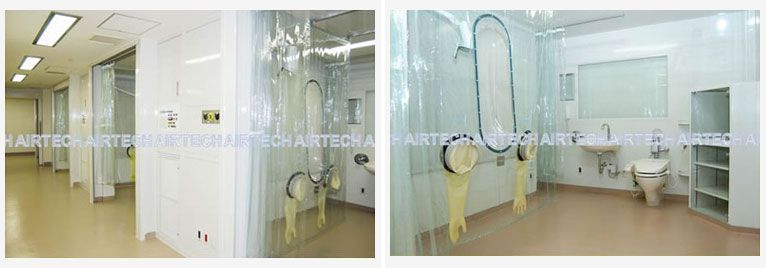Infectious Diseases Treatment Room
Infectious diseases can spread from one person to another by aerosol droplets. The spread of Tuberculosis (TB), for example, occurs when an otherwise healthy individual inhales a sufficient number of tubercle bacilli that are expelled by a patient infected with pulmonary TB. Thus it spreads rapidly to the healthy persons. To avoid this hospitals provide special room to treat this patients.
Utopia-Aire Isolation Room
Utopia-Aire Isolation rooms are special hospital rooms that keep patients with certain medical conditions separate from other people while they receive medical care. Sometimes isolation rooms use negative air pressure to help prevent contagious diseases (such as tuberculosis or flu) from escaping the room and infecting other people. This means that air is constantly being pulled into the room by a machine that then filters the air before it is moved outside. In a negative air pressure room, you may be able to feel air being sucked into the room under a closed door or through a slightly opened window.
Infection Control
Infection Control is an essential part of healthcare facilities at all levels. Effective infection control practices contribute hugely to maintaining a safe environment for everyone by reducing the transmission of infections between patients, healthcare workers, and others in the healthcare environment. So it is important to ensure that the design standards of an infectious disease treatment room will help to allow for measures that effectively isolate patients for treatments. An effective infection prevention and control measures can only be achieved when all essential elements are implemented properly for a specific health care environment.

